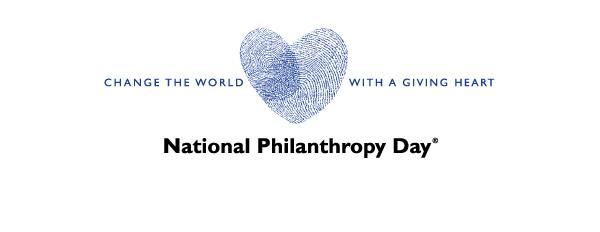11/12/2013
What are the characteristics of the best patrons?
![]()

On November 15, National Philanthropy Day, Hilary Pearson, President of Philanthropic Foundations Canada, gave a heartfelt talk in Quebec City on the state of philanthropy in Canada. Below in an excerpt of her talk that we wanted to quote:
“ What are the characteristics of the best patrons?
The best patrons are always curious. They want to know not only what an organization will do with their gift, but also why they prefer one strategy over another. More and more donors, especially major donors, want to know how their time and money will make a difference to the community. More importantly, what is the most effective type of intervention in terms of time, resources and energy, for ensuring a lasting impact?
And they want evidence. They want to know what works. They know, for instance, that you cannot say that strategy A is better than strategy B without analysing the data. That is why many charities work so hard to collect the data and solid evidence needed to secure donor support.
In the end, the best patrons think hard about the impact of their gift.
Evidence and impact go hand in hand; if you have supporting evidence, you can precisely describe the impact. In the short term, we can quantify the impact by citing the number of young children who have access to preschool programs, for instance, or the number of families who go to public health clinics. Over the long term, we can measure the impact in terms of societal benefits on a larger scale. In that case, the measure of the impact might be lower dropout rates in areas where young children are enrolled in preschool programs, or a drop in rates of chronic disease in neighbourhoods with public health clinics.
The more rigorous we are in describing the impact, the more compelling it is.
One of Canada’s largest family foundations, the Lucie et André Chagnon Foundation, is based right here in Quebec. The Chagnon Foundation's mission is to prevent poverty by contributing to the educational success of young Quebecers. Mr. Chagnon and his family knew from the outset that they wanted to make a difference in this area. But they did not start out with all the answers. They were curious about both philanthropy and this exceedingly complex issue in which they wished to become involved. When starting out, the foundation asked many questions and found out about the most effective practices in this area from other philanthropists in Canada and the United States. The foundation also looked for evidence. Inspired by other philanthropic organizations, such as the J.W. McConnell Family Foundation and the Annie E. Casey Foundation in the United States, they came to the conclusion that community-based interventions were the most effective. They joined forces with the Quebec government to support local and regional mobilization in areas that are critical to educational success: early childhood development, healthy lifestyle habits and student retention. Through this extraordinary partnership, which will last 10 years and calls on the partners to donate $200 million to the cause, the Chagnon Foundation and the government are in a position to gather data and share the results of their ongoing projects.
At the other end of the spectrum, we have philanthropic families like the de Gaspé Beaubien Foundation in Montreal, which works at a smaller scale as compared to the Chagnon Foundation. But once again, this family of philanthropists has been particularly effective because of their curiosity and determination to make an impact. Eight years ago, they were asked to make a donation towards the purchase of medical equipment for a small hospital in the Laurentians. They were curious, and asked the hospital administrators what the institution’s most pressing issue was. It turned out that the hospital was in financial difficulty and was having trouble achieving its objectives, due in part to management and communication issues. The de Gaspé Beaubiens realized that they could be much more effective philanthropists by helping the hospital achieve its broader goals. Over a period of several years, they supported a process of dialogue, management and training of hospital professionals at all levels. They gathered evidence of the impact of their involvement through an assessment conducted by HEC Montreal. The de Gaspé Beaubien Foundation is now eager to share the lessons learned, and is disseminating the very positive results, with the ultimate goal of improving health care across Quebec using a model that has been shown to work.
And there are other curious, engaged philanthropists on the Montreal scene.
The Brian Bronfman Family Foundation are working to create a network of peacemakers, the Graham Boeckh Foundation are developing a new approach to preventive intervention for youth with mental illness, and the J. Armand Bombardier Foundation investigate the capacity of community organizations to manage - there are probably too many stories to tell, but I have seen and heard enough today to assure you that private philanthropy is indeed a critical catalyst in the growth and advancement of organizations and ideas.”